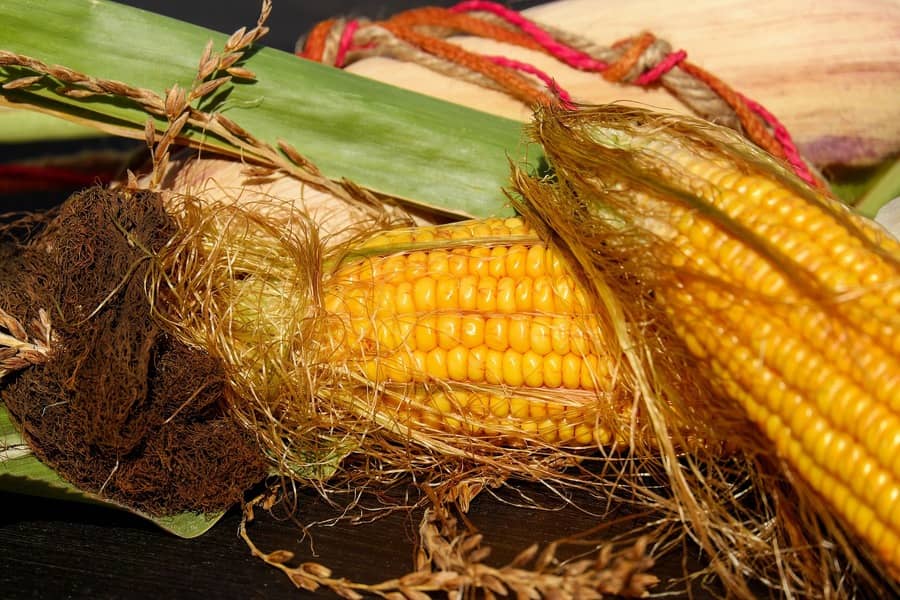Porto Alegre, October 25, 2021 – The Brazilian domestic market continues to ignore any additional problematic variable that may arise further on, as well as what has already happened to the domestic market in 2021. After a year of record domestic prices, the market now only seems to think about price and cost adjustment and brings prices to export parity or even below it, regardless of short-term consequences. On the one hand, part of the consumer market resumed purchases, together with exporters. On the other hand, it seems that growers prefer to leave soybeans rather than corn in warehouses and keep selling corn and accept lower prices every week. The risk is another adjustment of supply and demand in case exports quickly surge from November to January. The summer crop has developed well so far, but how can there be any production safety in a La Nina’s year? The planting of the 2022 second corn crop has a good window, which brings some early safety. It seems that exports are back in the command of the domestic market.
The Brazilian market has early lows because of the selling action by growers. Few sales in July and August amid the definitions of the second crop and, now, with the rain reaching Brazilian producing regions, growers seem more likely to sell the portion of safety stocks. Besides, the costs for the 2022 second crop rose sharply, mainly in the fertilizer segment, an additional expense that requires more corn commitments for input purchases. As growers do not seem interested in making too many sales of soybeans from their stocks yet, they end up putting pressure on corn sales.
The rain continued this week in the center-north of the country, after having corrected most of the soil moisture problems in the south and southeast of the country. At the beginning of this week, there is the projection of new heavy rain throughout the South region and advancing throughout the South, Paraguay, and Southeast regions. Earlier corn crops begin to enter pollination and silking in the South, and the largest portion will enter a critical stage in November. If November is a month of maintenance of this good rain regime, the crop must be full this summer. If it rains less, the market environment could bring some tension to prices.
The crops in the Southeast will be later. They must bring the harvest to March and April, with some crops in pivots being reaped at the end of January and February. The Midwest, which has a very discreet summer crop, will have the harvest in April and May more concentrated in Goiás.
Therefore, the summer starts well, but the Southern region deserves attention due to the year of La Nina and the critical phase of crops in November and December. Of course, the market starts to treat this good situation so far as a price-pressuring factor. This even allows some relaxation regarding exports. Besides the strong movement already evident by trading companies in Mato Grosso and Vale do Araguaia in October, now there is also the possibility of flow from other regions such as Paraná, São Paulo, Goiás, and Mato Grosso do Sul.
But weekly prices at ports ranged from BRL 88 to 91 with shipments from November to January. The counterpoint is São Paulo, with prices of BRL 90/92 CIF. As most domestic consumers seem to indicate they already have corn in their warehouses until the end of the year and refuse the offering of good lots, the alternative for market liquidity is to seek large exports. Today, it would be more attractive to sell in exports rather than in the domestic market. The picture begins to receive more attention when exporters open prices for the summer crop, with January and March shipments in Rio Grande at BRL 84/85. Would that be the limit down for the summer?
Another important point is that soybeans are having a great planting pace in second-crop corn regions, from Paraguay to Matopiba. In 2020, the delay in planting soybeans led to the expectation of delays in the planting of the second corn crop and created an environment of lengthening the off-season in the first half of the year. With the 2022 crop planted in a good window, the market will probably have new corn already from June, with a bias of falling prices as well a price adjustment curve toward export parity.
However, what the market wants and is doing at the moment is to bring current prices to export parity. In an international buyer market and now with the resumption of corn purchases by Iran, it seems that the Brazilian domestic market is giving up its natural supply protections in exchange for only a price adjustment, thus not bothering with some further difficulty such as exchange rate, international highs, and/or climate problems. In any case, it seems that the market will ignore the risks and be more concerned about bringing prices to lower levels than potential future supply difficulties. A price surge due to recent additional exports, some new high in the sensitive international market, exchange rate volatility, and/or some climate problem ahead would be more accentuated due to the exhausted supply alternatives. The consumer sector may be creating an environment for new highs later on, which may arise with the increase in logistics costs with the arrival of the soybean crop.
Agência SAFRAS Latam
Copyright 2021 – Grupo CMA

